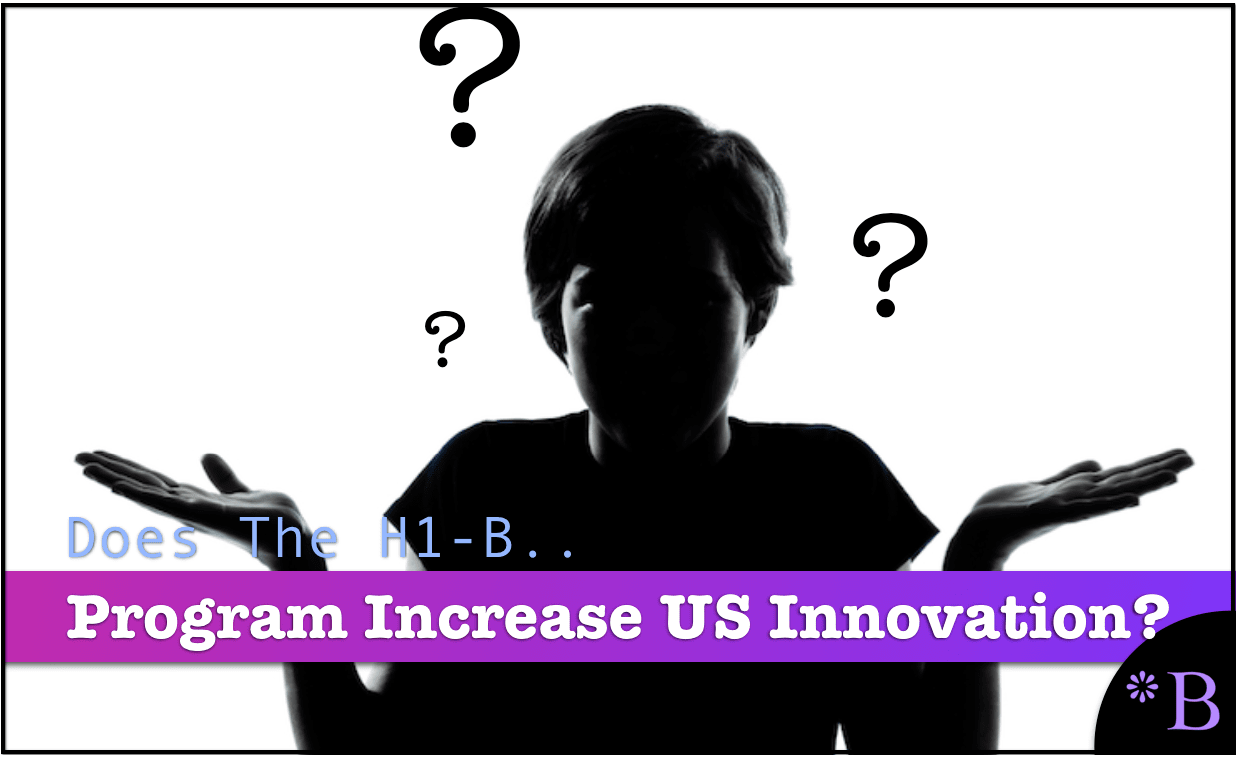Does the H1-B Visa Program Result in Higher US Innovation?
Executive Summary
- One of the hallmarks of the H1-B program is false claims by those that financially benefit from H1-B visas.
- Does the US become more innovative due to the H1-B visa program?

Introduction
Companies that bring in large numbers of H1-Bs often claim that it allows them to be more innovative. The evidence of innovation contradicts this claim.
U.S. dominance in technology has been due to our cultural flair for
innovation, good old Yankee ingenuity. Yet, as currently structured,
the H-1B work visa and employer-sponsored green-card programs are
bringing in workers who tend to be of lesser talent than their
American peers. Worse, they are indirectly displacing Americans. The
result is a net reduction in the country’s talent level.Yet the tech industry is lobbying Congress for an expansion of tech
immigration, claiming it needs to hire the “best and the brightest”
from around the world But the data show that most of the foreign tech
workers are ordinary folks doing ordinary work.One of my research projects, published in the peer-reviewed academic
journal Migration Letters, compared native U.S. engineers with
immigrant engineers who had first come to the U.S. as foreign
students. In computer science, the natives, on average, had a
significantly higher patenting rate than immigrants of the same age,
education, and so on. The rate for U.S. natives with only bachelor’s
degrees was as high as the rate for immigrants at the master’s degree
level. – Dr Norm Matloff
The Impact of H1-Bs on STEM Fields
The impact of the H1-B program on STEM fields is that the lower pay, as well as we have proposed the general discrimination against US domestic workers by Indians and the creation of an environment hostile to US domestic workers, generally decreases the appeal of the field to domestic workers.
The H-1B visa program reduces wages, making STEM careers unattractive to American students. This effect was anticipated: A 1989 internal National Science Foundation report forecast that the H-1B program, then in the proposal stage, would result in a flood of foreign
students into U.S. doctoral programs. The report stated that this would cause wages to stagnate, driving American science, technology, engineering, and math students into finance and law–exactly what did occur. – Dr Norm Matloff
Innovation or Repetition and Low Costs?
In 2015, the top ten applicants for H1-B visas were the following companies.
- Tata
- Cognizant
- Infosys
- Wipro
- Accenture
- Tech Mahindra
- IBM
- Syntel
- Larson & Toubro
- HCL
Not a single one of these companies is known for innovation.
IBM may, at first glance, look like the one innovative company on the list. However, while IBM was at one time innovative, but that was back when IBM was a very different company. As IBM has become more reliant on Indian labor, both in India and in the US with H1-Bs, IBM’s reputation as an innovator has continued to decline.
IBM still makes good mainframes, but IBM has over 350,000 employees, and very few of those employees work in the mainframe division. Its software business is nothing but a bunch of acquisitions, and its consulting and outsourcing operations are low-quality affairs with a lot of lying in the place of innovation. We cover this in the scandal around IBM’s false statements on Watson and its ineffective AI How IBM is Distracting from the Watson Failure to Sell More AI.
Who Has Made Most of the Contributions to US Innovation?
The industry lobbyists say that the H-1Bs are needed to retain the industry’s technological edge, but the fact is that the vast majority of technological advances in the computer field have been made by U.S. natives. This can be seen in rough form, for example, in the awards given by the Association for Computing Machinery (ACM). Of 54 recipients of the ACM System Software Award through 2001 (this is the award most closely associated with innovation in practice), only two have been foreign-born.199 – University of Michigan Journal of Law Reform
Conclusion
India, the dominant country in the H1-B visa worker program, is not a country that is known for innovation. Neither Infosys nor Tata nor any of the other top firms that apply for and consume the vast majority of H1-B visas are known for innovative work. What they are known for are low standards and low costs.
These facts, along with the evidence presented by Dr Norm Matloff, should make anyone question the claim that the H1-B program increases US innovation.
References
http://heather.cs.ucdavis.edu/Barrons.txt
http://heather.cs.ucdavis.edu/Mich.pdf